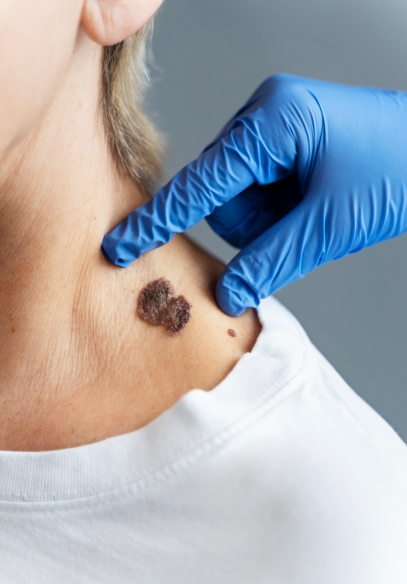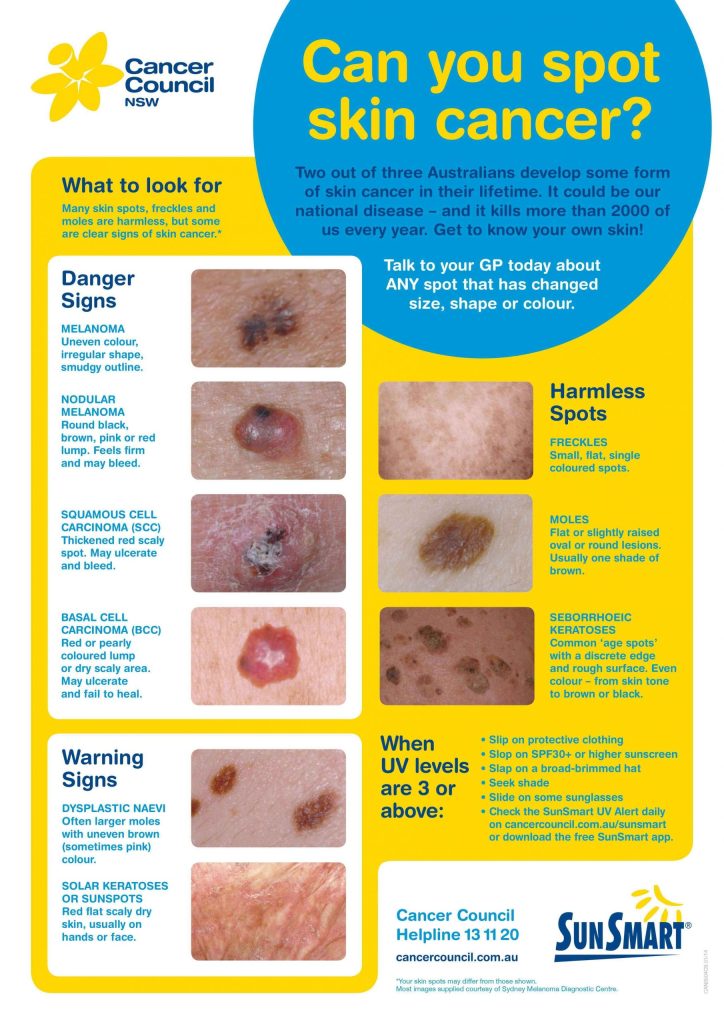same day & urgent walk-in appointments are available
(02) 9651 2077
3-4/286 New Line Road, Dural NSW 2158
OPENING HOURS
Monday
Tuesday
Wednesday
Thursday
Friday
Saturday
Sunday and Public Holidays
After Hours Phone Contact
8:00am - 6:00pm
8:00am - 6:00pm
8:00am - 6:00pm
8:00am - 6:00pm
8:00am - 6:00pm
8:30am - 12:00pm
Closed
137 425

What is Melanoma?
Melanoma is a type of skin cancer that develops in the skin cells called melanocytes and usually occurs on the parts of the body that have been overexposed to the sun.
Melanoma was the third most common cancer diagnosed in Australia in 2020, which along with New Zealand has the world’s highest incidence rate for melanoma.
Often melanoma has no symptoms, however, the first sign is generally a change in an existing mole or the appearance of a new spot.
These changes can include:
- colour – a mole may change in colour, have different colour shades or become blotchy
- size – a mole may appear to get bigger
- shape – a mole may have an irregular shape, may increase in height or not be symmetrical
- elevation – the mole may develop a raised area
- itching or bleeding.
What is non-melanoma skin cancer?
Non-melanoma skin cancers, now called keratinoctye cancers, are the most common cancers in Australia, however most are not life-threatening.
There are two main types: Basal Cell Carcinoma (BCC) and Squamous Cell Carcinoma (SCC).
Basal Cell Carcinoma accounts for about 70% of non-melanoma skin cancers. It can appear anywhere on the body but most commonly develops on parts of the body that receive high or intermittent sun exposure (head, face, neck, shoulders and back).
BCC typically manifests as a pearly lump with a pink, shiny or sometimes scaly appearance.
Squamous Cell Carcinoma accounts for about 30% of non-melanoma skin cancers. It begins in the upper layer of the epidermis (top skin layer) and usually appears where the skin has had most exposure to the sun (head, neck, hands, forearms and lower legs). SCC generally grows quickly over weeks or months.
Symptoms of SCC may include:
• thickened red, scaly spot
• rapidly growing lump
• looks like a sore that has not healed
• elevation – the mole may develop a raised area
• may be tender to touch.
Download the Cancer Council’s skin cancer identification poster here
What Does a Skin Check Involve?
A routine skin check with your GP will involve having your skin surveyed with underclothes on. Your GP will examine skin lesions, mole by mole using a hand-held dermatoscope. A dermatoscope is considered the gold standard for detecting skin cancers, with a particular focus on catching early melanoma, which can often be detected and cured early, before it progresses on to a more advanced stage.
Non-melanoma (keratinocytic) skin cancers including BCC (basal cell carcinoma) and SCC (squamous cell carcinoma) are also much easier to treat when detected at an earlier stage.
What Happens if my Doctor Detects a Skin Cancer?
Should your doctor detect a suspicious skin lesion, they will chat to you about the options of undergoing a skin biopsy or complete removal (skin excision).
A skin biopsy is undertaken in our treatment room, under local anaesthetic to the area of skin where the skin lesion is located. Our experienced nurses will give you instructions about wound care, and apply a water-resistant dressing to the site, following the procedure.
A mole (naevus) with dermatoscopic features suspicious of melanoma should always be completely excised. Non-melanoma skin cancers sometimes can be partially biopsied, but generally complete removal is the gold standard to ensure complete sampling of the skin lesion.
The biopsy sample is always sent to the pathology lab for detailed testing by a pathology specialist,and a final report is generally available around a week after the procedure. Sutures (stitches) will typically remain in place for around 7-10 days, depending on the location of the body, and will be removed at the follow-up appointment with your doctor.

Please chat to your doctor about fees that may be incurred for any skin lesion biopsies and removals.
Skin cancer check-ups are generally recommended to be performed annually for most Australians.
To book a skin cancer check today, please click here to book an appointment online, and select “Skin Check” as your Appointment Type.


